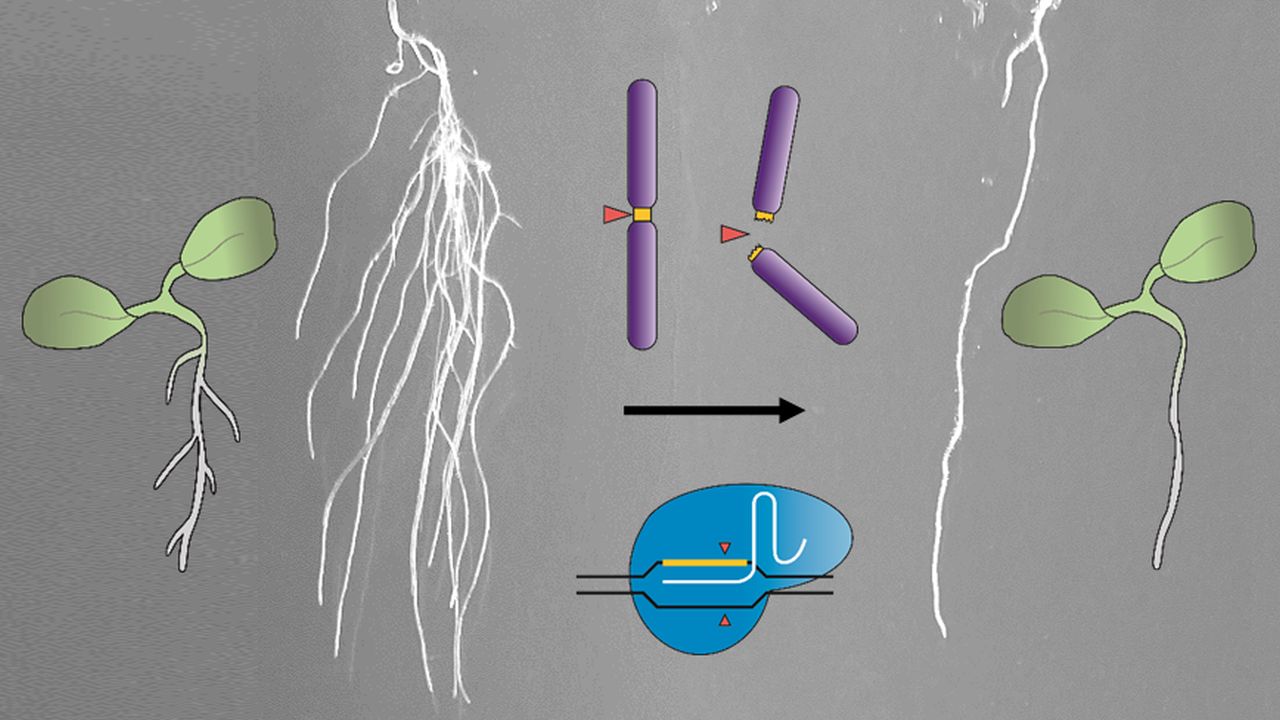
With the help of the CRISPR/Cas molecular scissors, genetic information in a plant can be modified to make the latter more robust to pests, diseases, or extreme climatic conditions. Researchers of Karlsruhe Institute of Technology (KIT) have now developed this method further to eliminate the complete DNA of specific cell types and, thus, prevent their formation during plant development. This will also help to better understand development mechanisms in plants. The findings are presented in Nature Communications. (DOI: 10.1038/s41467-022-29130-w)
By means of molecular scissors, the DNA - the carrier of genetic information - can be modified in plants. So far, the CRISPR/Cas method co-developed in plants by Professor Holger Puchta, molecular biologist at KIT's Botanical Institute has already been used to specifically insert, exchange or combine genes. The goal is to increase the plant's resistance to diseases and environmental impacts. CRISPR (stands for Clustered Regularly Interspaced Short Palindromic Repeats)/Cas are molecular scissors that can specifically recognize and cut DNA sequences. "We have studied molecular scissors for plant use for 30 years now. In the beginning, we applied them to modify individual genes. Two years ago, we were the first worldwide to restructure complete chromosomes," Puchta says. For his research, the pioneer of genome editing twice received the renowned Advanced Grant of the European Research Council (ERC). "We were able to optimize this method. With CRISPR-Kill, we have reached now an entirely new level of development: We can eliminate certain plant cell types and prevent the formation of specific plant organs."
Eliminating Secondary Roots and Petals with CRISPR-Kill
The experiments carried out by the scientists concentrated on secondary roots and petals of the model plant thale cress (Arabidopsis thaliana). "These are classical examples in biology. Here, we know the genetic program and the cell types that are important for the formation of these plant organs," the molecular biologist explains. After the elimination of these cells, CRISPR-Kill plants no longer formed any petals or secondary roots, whereas the control plants exhibited normal growth.
Contrary to other methods that eliminate cells with cytotoxins or laser radiation, CRISPR-Kill induces multiple cuts in the genome. A genome consists of a certain number of chromosomes, on which the individual genes are arranged in fixed order. "So far, CRISPR/Cas has aimed for exactly one location and has cut once or twice to modify a gene or chromosome," Puchta says. "Now, we have reprogrammed our molecular scissors. They no longer address the genomic DNA only once, but aim in the respective cell type for a sequence that is encountered often in the genome and that is essential for the survival of the cell. In this way, many cuts are induced at the same time - too many for the cell to repair them. The cell will die."
Better Understanding Development Processes in Plants






